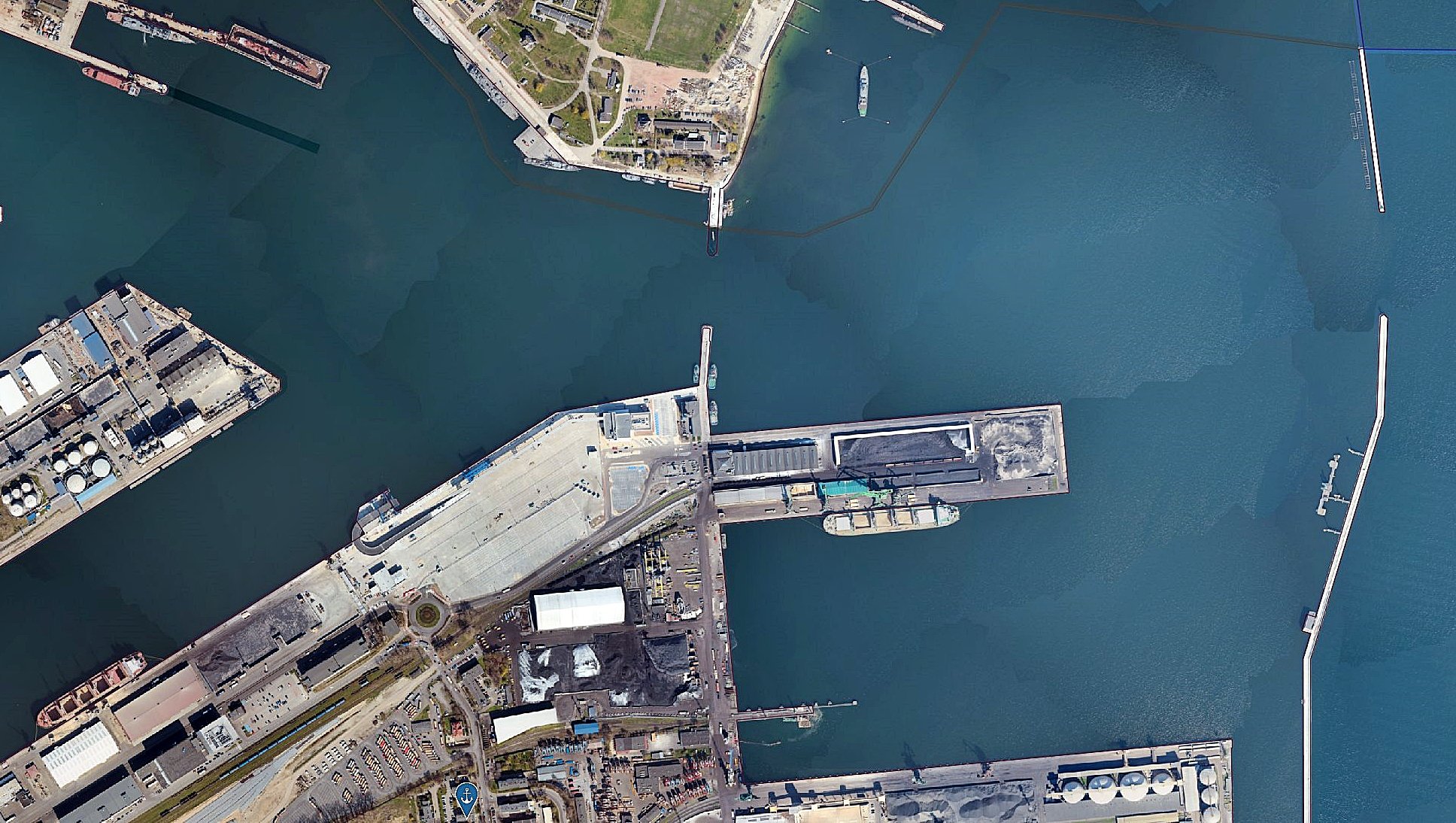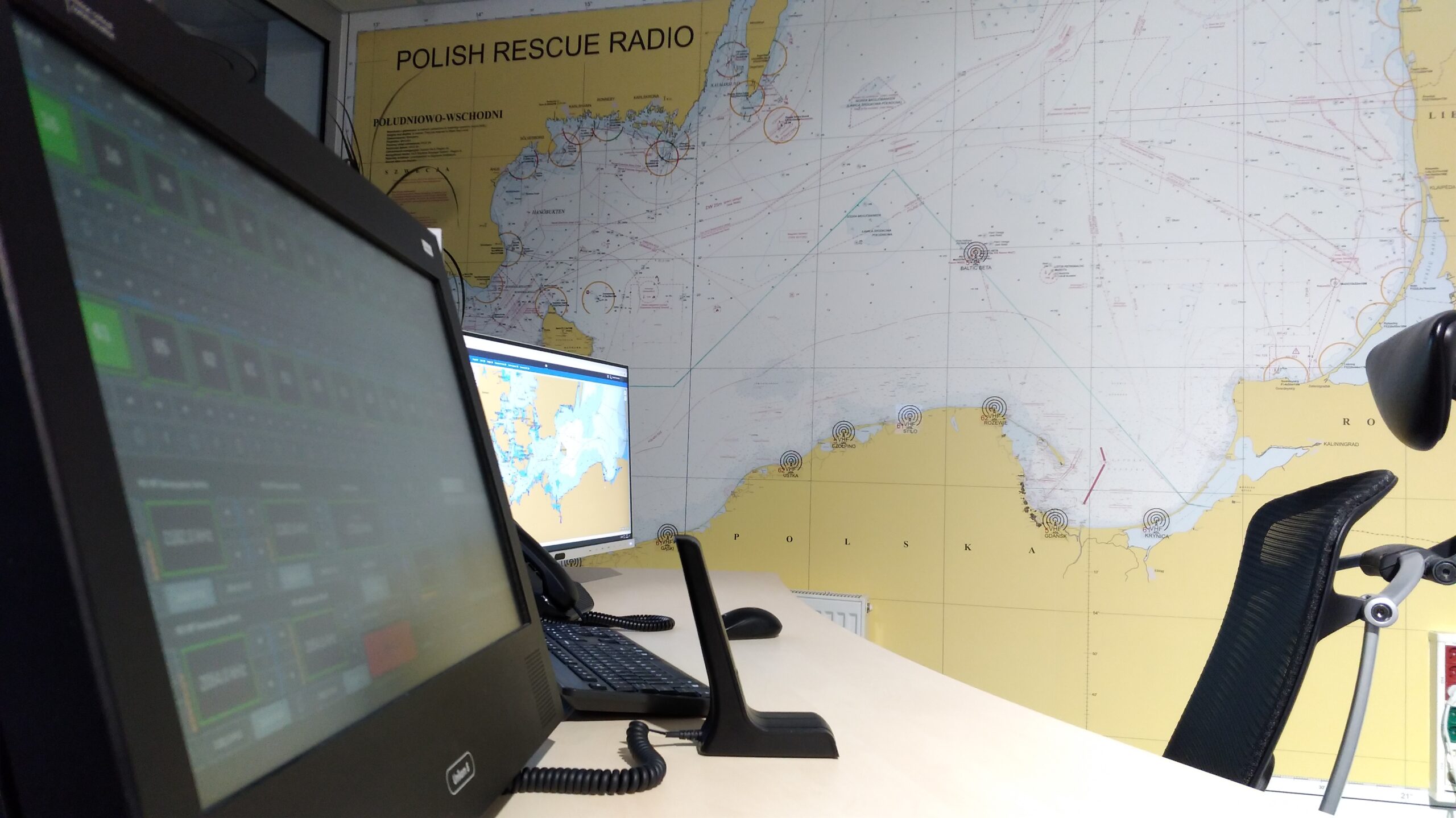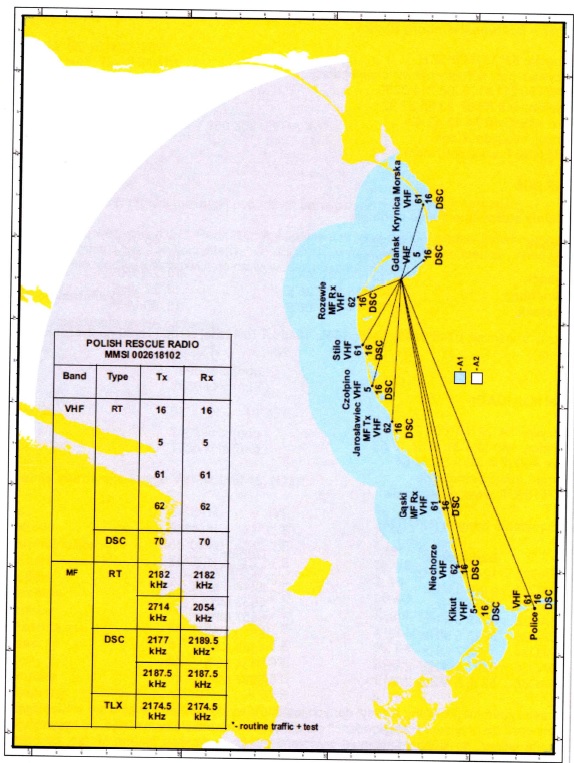
Maritime Traffic Safety Department
Polish Rescue Radio
Polish Rescue Radio - EN

The coast station "Polish Rescue Radio" took over the functions and duties of the former coast station "Witowo Radio" from 1st of January 2020. "Polish Rescue Radio" is operated by a certified GMDSS operator who is part of the VTS centre.
The coast station "Polish Rescue Radio" conducts round-the-clock monitoring under the Global Maritime Distress and Safety System (GMDSS) in the Polish area of responsibility for rescue operations (Search and Rescue - SAR).
The tasks of the radio service (the duty operator of "Polish Rescue Radio") include:
- ensuring round-the-clock communication and listening on international radio frequencies intended for distress and safety;
- broadcasting of Maritime Safety Information (MSI) - navigational warnings, weather forecasts and ice reports;
- ongoing cooperation with the Maritime Rescue Coordination Center in Gdynia (MRCC Gdynia) and vessels to ensure safety at sea and efficient conduct of rescue operations.
Communication in distress and for safety at sea is conducted on intermediate waves (MF) and on very short waves (VHF) in English and Polish.
Communication in the MF band is carried out from the radio station in Ustka by means of digital selective calling (MF DSC), radio-telex and voice communication. The range of the radio station is approximately 150 nautical miles. Details on the listening and calling frequency can be found in nautical publications (*).
Communication in the VHF band is carried out from 10 radio stations located along the Polish coast by means of digital selective calling (VHF DSC) and voice communication. The location of individual radio stations, the frequencies used and their ranges can be found in nautical publications (*).
Navigational warnings, weather forecast and ice reports are broadcast in English in the MF band on 2714 kHz after announcement on 2182 kHz and in the VHF band on channels 5, 61 or 62 (depending on location) after announcement on channel 16 and on request (in Polish or English). The times of broadcasting warnings and messages are given in nautical publications (*).
The Polish Rescue Radio closely cooperates with the Maritime Search and Rescue Service (SAR Service) by providing information on vessels and people in danger, calling for help or needing another form of assistance in cases of threat to life or property.
The radio service of the Maritime Medical Assistance Service (TMAS) cooperates with the University Center of Maritime and Tropical Medicine in Gdynia.
(*) Nautical publications - eg Spis Radiostacji Nautycznych Nr 530 (List of Nautical Radio Stations No. 530), issued by the Hydrographic Office of the Polish Navy (BHMW), or a foreign equivalent.
STATION DETAILS:
Name and call sign: Polish Rescue Radio (SPL),
Phone: +48 58 355 3670; +48 58 355 3674
Fax: +48 58 620 5363; +48 58 620 5328
Email: gmdss@umgdy.gov.pl
MMSI: 002618102

-
AuthorMichał Tomczyk
-
Creation date11 March 2022
-
Modified25 October 2022 by Michał Tomczyk
